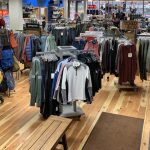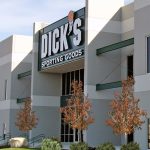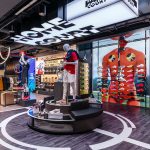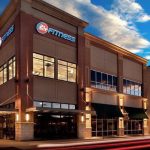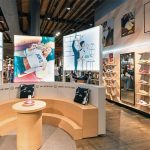The Timberland Company, Inc. reported another solid quarter of top-line growth but first quarter profits fell well short of Wall Street’s estimates due to higher product costs. TBL shares fell 27.7 percent last week to close at $32.67 on Friday.
Net income declined 30.2 percent to $18.0 million, or 35 cents per share, due in part to a plan to delay meaningful price increases until the back half of 2011 as well as increased marketing investments. Analysts consensus estimate had been 59 cents a share although the company, unlike many others, does not provide EPS guidance. Revenue increased 10.1 percent to $349.0 million – up 8.5 percent on a constant-dollar basis. The gains reflect growth in every region, in retail and in wholesale, and in each product category, management said on a conference call with analysts.
North America revenue increased 8.3 percent to $132.0 million, driven by growth across all brands, channels, and genders, including double-digit growth in men’s footwear. The 10 percent comp gain-its third consecutive quarter of retail comp growth-was the highest retail comp growth Timberland had experienced in North America since before 2004.

On the call, Jeff Swartz, Timberland’s president and chief executive officer, said the North America region’s results “show that the brand momentum generated in our home market over the last six months is genuine.” In North America wholesale, first-quality revenue was up 13 percent. In TBL specialty stores, revenue grew 10 percent with comps up 27 percent in the quarter. E-commerce in the region jumped 43 percent. The region’s momentum is being supported by the March opening of a store on Newbury Street in Boston, the April opening of another on Market Square in San Francisco, and the planned opening over the next two months of a store in Herald Square in New York.
Europe revenue increased 9.3 percent to $165.7 million, or 8.3 percent on a constant-dollar basis, led by strong performance in men’s and kids footwear at wholesale. Double-digit growth in most countries was partially offset by a slow start in the U.K. Both wholesale and retail revenue rose 9 percent, and comps were up 2 percent.
Asia revenue increased 17.8 percent to $51.3 million, and increased 10.0 percent on a constant dollar basis, fueled by continued expansion in China, same-store store growth, and new store openings in Taiwan and Hong Kong. Double-digit growth was seen in every country with the exception of Japan, which experienced a decline due to the earthquake and tsunami. By channel, Asia results were driven by double-digit growth in retail revenue, led by new store expansion, 15 percent comp store sales growth, and reflect double-digit growth in apparel and accessories.
By category, footwear revenue increased 10 percent in the quarter, driven by men’s footwear in all regions, women’s footwear in North America and Asia, and kids footwear in Europe. Apparel and accessories revenue increased 10 percent.
By channel, wholesale revenue climbed 8.6 percent to $252.0 million, led by high-single-digit growth in North America and Europe. Worldwide consumer-direct revenue increased 14.0 percent to $97.0 million, reflecting growth across all segments, with comps up 8 percent. The net addition of eight new stores year-over-year brought total Timberland owned-retail stores to 229 worldwide. Including these locations, total owned and partner-operated doors was over 1,000.
The profit decline reflects a 300 basis points decline in gross margins to 47.0 percent of sales because of higher leather, labor and transportation costs. Company CFO Carrie Teffner said on the call that price increases and mix will mitigate these cost pressures in the back half of the year.
Operating expenses as a percent of revenue increased 140 basis points to 38.8 percent due to targeted investments to grow retail, to support spring/summer advertising in select markets, and to fund its ERP implementation. Advertising was up 30 percent in the quarter off a small base. Operating expenses in the quarter also reflect higher variable costs given its double-digit revenue growth, an increase in employee-related costs, and roughly $2 million of unfavorable foreign exchange.
Teffner also noted that last year’s results included a $1.5 million gain from the termination of a licensing agreement. In addition, she said Timberland “deliberately chose to increase advertising spend in the first quarter, a relatively quiet quarter for us normally, in order to take advantage of the strong sell-in from year-end and to keep the momentum going into the spring and summer seasons.”
Inventory at quarter-end was $187 million, an increase of 36 percent over a low level in the 2010 quarter. The increase reflects its outlook for the remainder of the year, higher product costs, and some strategic advance purchases of core product.
On the call, Swartz noted that the 10 percent overall growth is the strongest first quarter revenue growth Timberland has had since 2005 and “is a real indication of the brand’s resurgence globally.” He was also encouraged that the Earthkeeper footwear was up double digits across genders, channels, and geographies, and also pointed to strength in the Outdoor Adventure collection. In response to a question, he noted that the classic boot business continues to be a “soft business” for the company and was not driving the North America region turnaround. Said Swartz, “It has stopped sliding. It has firmed up. It’s in low-single-digits in terms of improvements as a business.”
Swartz also noted that “consumers globally are still very wary” and input costs will remain under pressure throughout 2011.
“We expect the benefit of appropriate pricing actions to be felt mostly in the back half of 2011,” said Swartz. “We also will invest in expanding our specialty footprint in premium markets globally to be more directly engaged with consumers, to control our product mix, test our pricing strategies, and drive healthy top-line momentum.”





